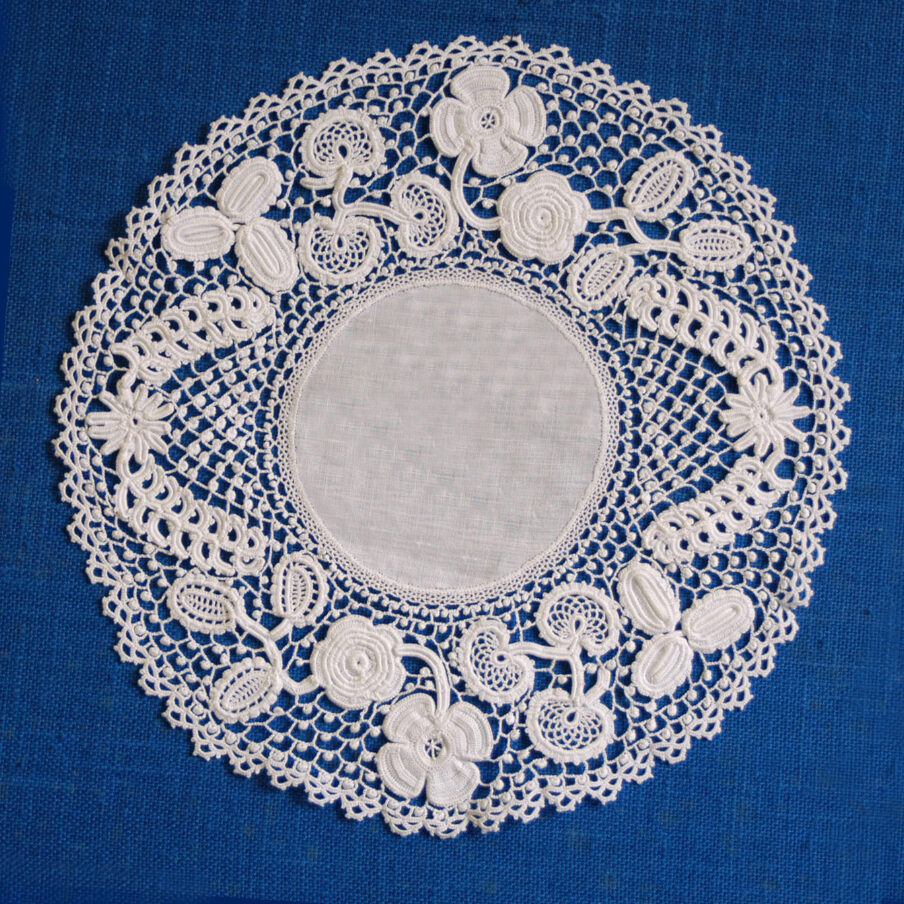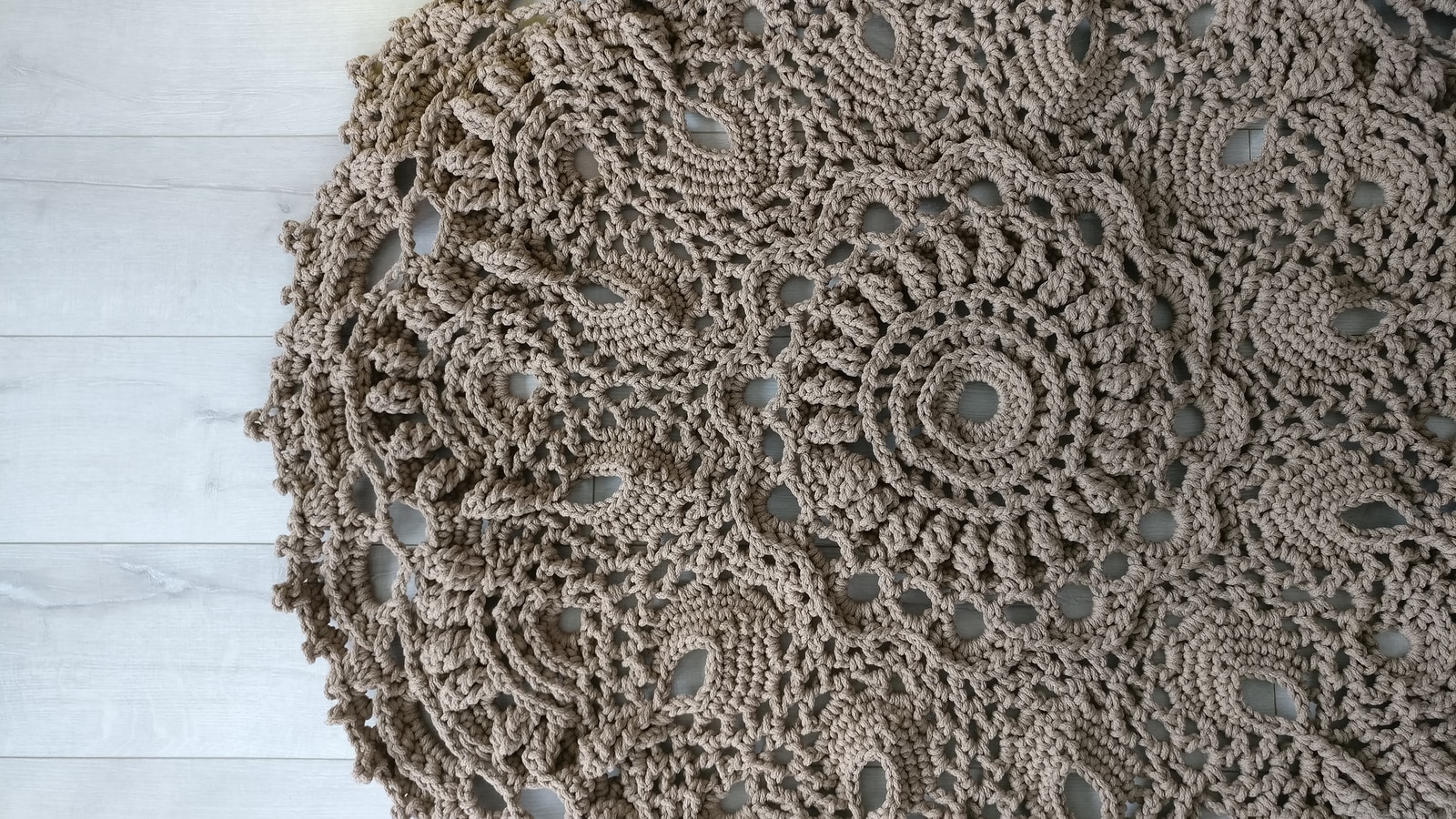This question reminds me of those you used to see on a test as a kid in school where it seemed like it was a trick question. Like the answer is obvious… it’s too easy… so then you doubt yourself on whether that is the correct answer or not. Yes, it is that obvious – the origins of Irish crochet are geographically tied to Ireland. But exactly where is a bit more murky.
Irish crochet is a specific crochet-made craft resulting in a lace-like textile and it’s considered to be one of the 7 types of Irish lace according Pallisner. She was a known expert on lace and wrote the History of Lace originally published in 1865! Her book is currently on its 4th edition and still considered an authority on the subject matter!
Circling back to understanding why Irish Crochet origins are not more specific, you should probably understand a bit about the conditions of living in Ireland during the mid-19th century.
A Ravaged Country
In the late 1840s, Ireland was shattered by famine and disease. After a combination of several consecutive potato crop failures and harsh winters, a political climate that still required exportation of other crops, there was practically nothing to eat. There was so much starvation that it led millions to either flee the country or risk death. As a result, there were several famine relief projects that had been established throughout the country. One of the most notable were nuns offering lacemaking classes in various regions of the country. It is presumed that this resulted in the creation of Irish crochet.
Clones Lace – One Irish crochet product
Right in the midst of possibly the worst time in Ireland’s history, the Reverend Thomas Hand and Mrs. Cassandra Hand settled in Clones in October 1847 from England. The rural areas of Clones was one of the most affected in the country. Clones came to lose about 30% of its population.
Proper upbringing among aristocrat ladies included an expectation for skills in, and spend time in, lacemaking, embroidery, and crochet. With a desire to contribute to the relief efforts, Cassandra Hand established her own famine relief project from her home and provided lacemaking classes to create a source of income for local families. With crochet being the easiest and quickest lace to make at the time, she used some Venetian Point lace as inspiration, helped others adapt their own needles into crochet hooks, and a crocheted lace was born.


The lace is identified and named after its geographic namesake, Clones lace, and it is one of the 7 types of Irish lace. With connections back to England to provide buyers for the lace produced, Cassandra’s efforts resulted in a school built, and extreme hardship was almost non-existent in the area within the decade. Clones eventually became known as the center of lacemaking for all of Ireland by 1910. Clones was just one of various locations throughout Ireland where Irish lace, crochet made or otherwise, became the established cottage industry that provided employment for a vast number of families to ease the worst from the famine.
Another Possibility
However, not everything about Irish crochet is clear cut. There is conflicting evidence if it truly originated in Ireland to begin with. Mademoiselle Eleonore Riego de la Branchardière, born in England, is one of the generally accepted creators of Irish crochet among historians. She gives claims that crocheted lace did not exist prior to her first publication in 1846. She specified so in a forward of one of her Irish crochet books many years later, claiming that after learning how to make Spanish Point (another type of raised needlepoint lace), she figured out she could produce a similar result with her crochet needle. Since her mother was Irish, Mlle. Riego felt a certain bond with Ireland and held a large interest to help during the Great Famine. She did so by developing new ideas and designs for Irish crochet, and also worked on marketing for the industry on a global scale through new publications and entries to world fairs.
Throughout the second half of the 19th century, Mlle. Riego produced numerous publications about crocheted lace with patterns and directions. In 1887, she was commissioned by Queen Victoria to publish the Royal Jubilee Crochet Book. As a result, she is decisively established as the leading expert on crochet lace (and other lacework, knitting and tatting as well) during this time. However, beyond these publications that were mass-produced and distributed across the continent, there is very little evidence of any other direct involvement in the founding of Irish crochet itself.
It is without question that Mlle. Riego had an astute business mind and capitalized on establishing herself as an world-renowned expert. And given what we know about the timeline, it can be argued that perhaps Mrs. Cassandra Hand took a page out of Mlle. Riego’s book, using her hook and another lace as inspiration, but there is no true way of knowing if one influenced the other or not. Therefore, a lack of more supportive evidence can likely indicate that Irish crochet was developed by the efforts of several different women who used their knowledge of crochet to help Irish families around the same time periods. This seems more plausible given its massive widespread growth in such a short time frame, along with the slight variations among them, such as the case with Clones lace being the only one with the distinguishing “knots.”
Muddying the Waters
As mentioned earlier, there are 7 types of Irish lace, but not all are made using a crochet hook. As a result, it can make distinguishing relevant information difficult without further clarification. For example, Rosslea lace was another Irish lace that used crochet techniques. Others, such as Youghal and Kenmare laces, use needlepoint methods. Additionally, some lacemakers would utilize both a hook and a needle with both types, depending on their skill and technique. With a cunning eye, you should be able to distinguish between them on actual samples. However, when you are digging through historical documentation and references in publications, Irish lace just isn’t descriptive enough to know the exact type, method or origin of creation.
I’d love to hear from you if you have a great reference that details more about Irish Crochet and its historical roots beyond what I have listed here and my resources page. Comment below your thoughts, suggestions, or questions and please consider signing up for my free newsletter.
References
- Earnshaw, P. (1991). Lace in fashion: From the sixteenth to the twentieth centuries (2nd ed.). Gorse Publications.
- Guild of Irish Lacemakers (n.d.). Irish Crochet Lace. http://www.irishlaceguild.com/?page_id=251
- McPhelim, D. (2019). The story of Clones lace. History Ireland, 27(5), 6-7. https://www.jstor.org/stable/26853106
- Pallisner, B. (1984). History of lace (4th ed.) (M. Jourdain & A. Dryden, Eds.). New York: Dover. (Reprinted from History of lace (4th ed.) (M. Jourdain & A. Dryden, Eds.) by B. Pallisner, 1911, New York: Scribner) (Original work published 1865).
- Paludan, L. (1995). Crochet: History and technique (J. Olsen & M. Zanders, Trans.). Interweave Press, Inc. (Original work published 1986)
- Potter, A. L. (1990). A living mystery: The international art & history of crochet. A.J. Publishing International.

